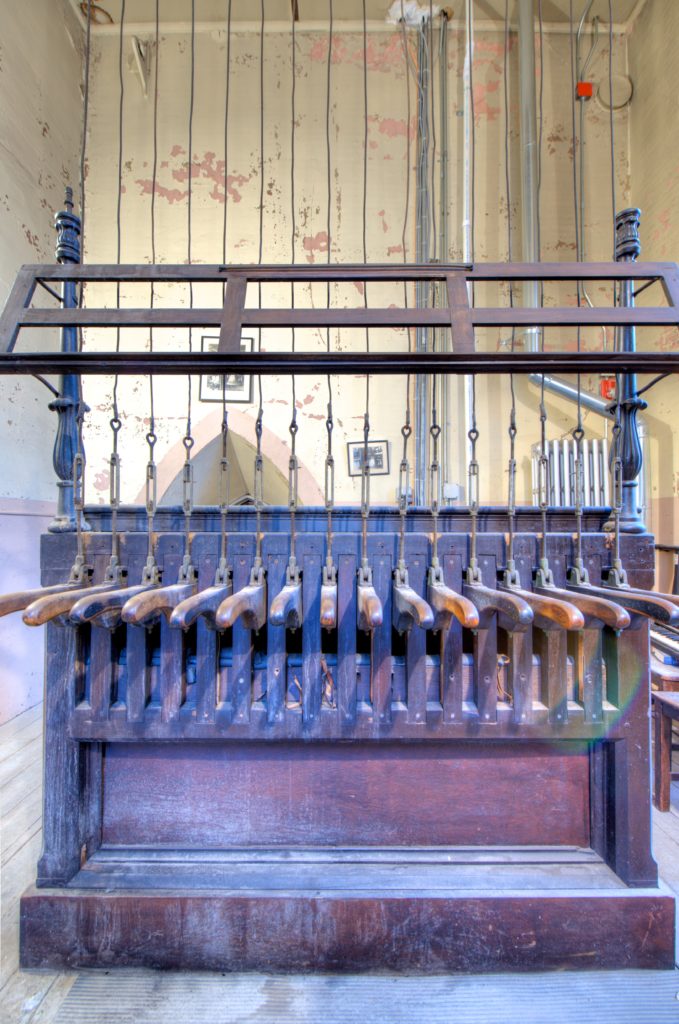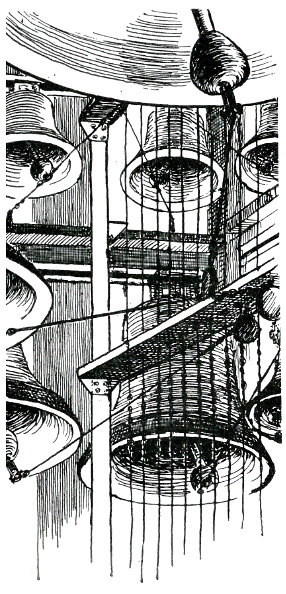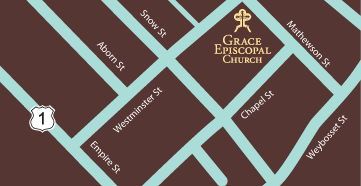A History of the Tower Bells
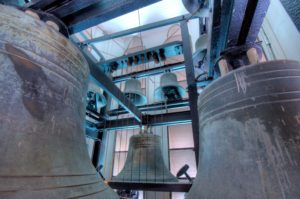 Grace Church is blessed with a set of 16 bells. Lewis T. Downes, the first organist of record at Grace Church, proposed the idea of bells to the vestry, who formed a committee in March 1860 to solicit subscriptions. The chairman of this campaign was Henry Prescott, a Grace Church Sunday School teacher who died in the First Battle of Bull Run. Funding for the bells came largely from outside the parish. The widespread interest in this appeal is evidenced by the inscriptions on the bells and the rapidity with which the project was completed.
Grace Church is blessed with a set of 16 bells. Lewis T. Downes, the first organist of record at Grace Church, proposed the idea of bells to the vestry, who formed a committee in March 1860 to solicit subscriptions. The chairman of this campaign was Henry Prescott, a Grace Church Sunday School teacher who died in the First Battle of Bull Run. Funding for the bells came largely from outside the parish. The widespread interest in this appeal is evidenced by the inscriptions on the bells and the rapidity with which the project was completed.
- The largest “tenor” bell sounding D is the Bishop’s Bell.
- The second bell, E, is the Rector’s Bell.
- The third bell, F# is the Brown University Bell. This bell was presented by John Carter Brown and was given on the condition that it would be rung on each Commencement Day.
- The G bell was given by Alexander Duncan, who is remembered for his benefaction to Butler Hospital.
- The G# bell bears the egalitarian inscription, “from the Citizens of Providence.”
- The A bell was the gift of the Providence Marine Company of Artillery and was dedicated to “The Constitution and the Union.”
- The A# bell was given by The Providence First Light Infantry and dedicated to “Liberty Protected by Law.” It is requested to be rung each year on September 10 “forever in memory of Oliver Hazard Perry of R.I., the Victor of Lake Erie, 1813.”
- The B bell was contributed by members of the Rhode Island Bar Association.
- The C bell was donated by A.D. and J.Y. Smith and Company.
- The C# bell is inscribed, “From the Physicians of Providence.”
- The D bell was given by the Grace Church Choir.
- Three members of the Burgess family gave the D# bell.
- The E bell was contributed by the Sunday School of Grace Church.
- The F bell was given by the personal staff of William Sprague, Governor of Rhode Island in 1860.
- The F# bell was given by Walter S. Burgess, Attorney General of Rhode Island in 1860 and the grandfather of Senator Theodore Francis Green.
- The G bell was given by the Richmond family, proprietors of Woonasquatucket Print Works.
 The bells (or chimes as they were first called) were first rung on Easter Day, March 31, 1861, less than a year from the formation of the campaign committee. The first music played was an original composition by Lewis T. Downes, who was the catalyst for their placement.
The bells (or chimes as they were first called) were first rung on Easter Day, March 31, 1861, less than a year from the formation of the campaign committee. The first music played was an original composition by Lewis T. Downes, who was the catalyst for their placement.
With two exceptions (in 1940 when some were recast, retuned and their upkeep endowed through the generosity of Rose Anne Grosvenor, and in 1989 when they were turned and the housing was restored as part of the “Saving Grace” campaign of that year), they have been continually in use since 1861.
Currently, the bells sound morning, noon and evening weekdays and are played before each Grace Church service, with the exception of Good Friday.
The bells, cast by Henry N. Hooper and Company in Boston in 1861, are placed in two decks in the tower. Their aggregate weight is 8 tons, and their original cost was approximately $6,000. The bells are unusual in design and character in that they were founded on the proportion of the Spanish bell, which is longer in the waist and gives the minor third in the harmonics instead of the major third that is more commonly used.
They are playable both manually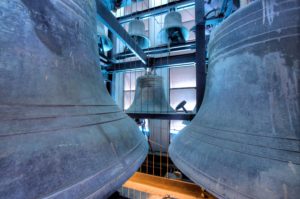 from a clavier in the second floor of the tower and automatically by means of a programmable mechanism provided by the Verdin Company of Cincinnati, Ohio. The Westminster Chime Clock, which plays the appropriate bells with a separate set of hammers, were given to Grace Church in 1929 by Charles and Elizabeth Sisson, dedicated to the Glory of God and in loving memory of their son Russell Eyre Sisson. The Westminster Chimes were first used on Easter Day, March 31, 1929, exactly 58 years after the bells were first played from the clavier.
from a clavier in the second floor of the tower and automatically by means of a programmable mechanism provided by the Verdin Company of Cincinnati, Ohio. The Westminster Chime Clock, which plays the appropriate bells with a separate set of hammers, were given to Grace Church in 1929 by Charles and Elizabeth Sisson, dedicated to the Glory of God and in loving memory of their son Russell Eyre Sisson. The Westminster Chimes were first used on Easter Day, March 31, 1929, exactly 58 years after the bells were first played from the clavier.
